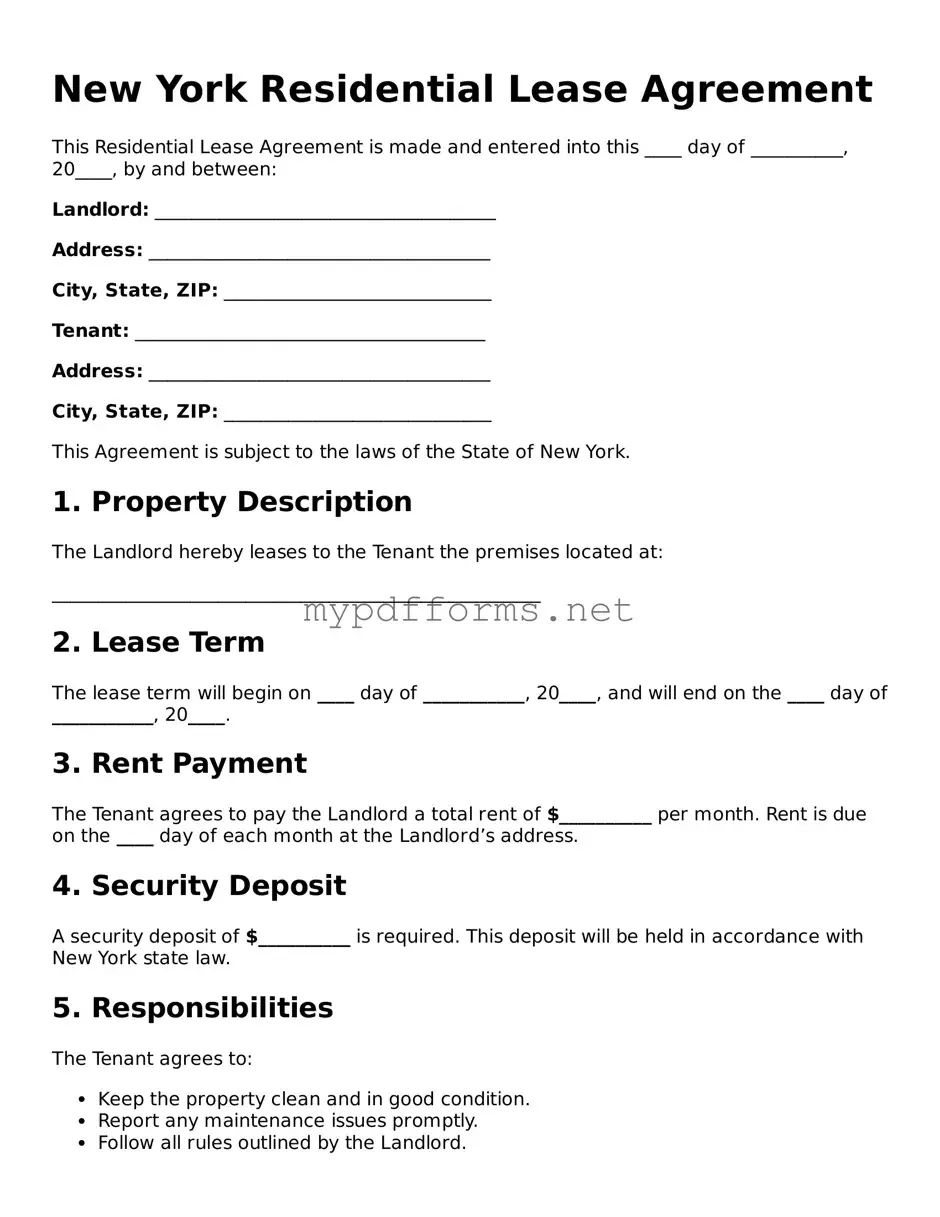The New York Residential Lease Agreement is similar to a Rental Agreement, which is often used interchangeably. Both documents outline the terms under which a landlord allows a tenant to occupy a property. However, a Rental Agreement typically covers a shorter duration, often month-to-month, while a Residential Lease Agreement usually spans a longer term, such as one year. Both documents specify the rent amount, payment due dates, and responsibilities for maintenance and repairs.
Another document akin to the Residential Lease Agreement is the Commercial Lease Agreement. While the Residential Lease focuses on residential properties, the Commercial Lease pertains to business properties. Both agreements detail the terms of occupancy, including rent and duration, but the Commercial Lease may include additional clauses related to business operations, zoning laws, and liability insurance, reflecting the different nature of the properties involved.
The Sublease Agreement is also similar, as it allows a tenant to rent out their leased property to another party, known as a subtenant. This document must align with the original Residential Lease Agreement, ensuring that all terms are honored. Both agreements outline responsibilities regarding rent payments and property maintenance, but the Sublease Agreement introduces a new party into the mix, requiring careful attention to ensure compliance with the original lease terms.
A Roommate Agreement shares similarities with the Residential Lease Agreement, particularly when multiple tenants occupy a single rental unit. This document outlines each roommate's responsibilities, including rent payment, utilities, and common area maintenance. While the Residential Lease Agreement is a binding contract with the landlord, the Roommate Agreement is a private arrangement between tenants, focusing on internal dynamics and shared responsibilities.
Filling out the Power of Attorney form for your specific needs can streamline decision-making during critical times when you may be unable to make choices about your finances or healthcare. This form fosters crucial legal authority, ensuring a trusted individual can act on your behalf effectively.
The Lease Option Agreement is another related document. This agreement not only allows a tenant to rent a property but also provides the option to purchase it at a later date. Similar to the Residential Lease Agreement, it includes terms about rent and property maintenance. However, it also incorporates conditions for the purchase, such as the purchase price and timeframe, making it a unique blend of leasing and potential ownership.
The Month-to-Month Rental Agreement is a flexible alternative to the Residential Lease Agreement. It allows tenants to occupy a property without a long-term commitment, typically renewing on a monthly basis. While both documents address rent and responsibilities, the Month-to-Month Agreement offers more flexibility for both landlords and tenants, as either party can terminate the agreement with proper notice, making it ideal for short-term arrangements.
The Lease Renewal Agreement is closely related as it is used when a tenant wishes to extend their current lease. This document reaffirms the original terms of the Residential Lease Agreement, often with updated dates and possibly revised rent amounts. It ensures that both parties agree to continue the tenancy under the same conditions, providing a seamless transition for the tenant who wishes to stay in the property longer.
Finally, the Eviction Notice can be seen as a counterpart to the Residential Lease Agreement, as it comes into play when lease terms are violated. While the Residential Lease outlines the rights and responsibilities of both parties, the Eviction Notice serves as a formal communication from the landlord to the tenant regarding lease violations. It details the reasons for eviction and the necessary steps the tenant must take, ensuring that the process is transparent and follows legal protocols.
